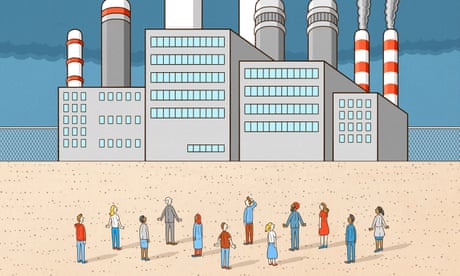Rare Cretaceous-Age Fossil Opens New Chapter in Story of Bird Evolution
A Cretaceous-age, crow-sized bird from Madagascar would have sliced its way through the air wielding a large, blade-like beak and offers important new insights on the evolution of face and beak shape in the Mesozoic forerunners of modern birds.
An international team of researchers led by Ohio University professor Dr. Patrick O’Connor and Stony Brook University professor Dr. Alan H. Turner announced the discovery today in the journal Nature.
Birds have played a pivotal role in shaping our understanding of biological evolution. As long ago as the mid-19th Century, Charles Darwin’s keen observations on the diversity of beak shape in Galapagos finches influenced his treatise on evolution through natural selection.
This fossil bird discovery adds a new twist on the evolution of skulls and beaks in birds and their close relatives, showing that evolution can work through different developmental pathways to achieve similar head shapes in very distantly related animals.
The bird is named Falcatakely, a combination of Latin and Malagasy words inspired by the small size and the sickle-shaped beak, the latter representing a completely novel face shape in Mesozoic birds.
The species is known from a single well-preserved, nearly complete skull, one that was buried in a muddy debris flow around 68 million years ago. Bird skeletons are rare in the fossil record because of their lightweight bones and small size. Bird skulls are an even rarer find. Falcatakely is the second Cretaceous bird species discovered in Madagascar by the National Science Foundation-funded team.
The delicate specimen remains partially embedded in rock due to the complex array of lightly built bones that make up the skull. Although quite small, with an estimated skull length of only 8.5 cm (~ 3 inches), the exquisite preservation reveals many important details. As one example, a complex series of grooves on the bones making up the side of the face indicate that the animal hosted an expansive keratinous covering, or beak, in life.
“As the face began to emerge from the rock, we knew that it was something very special, if not entirely unique,” notes Patrick O’Connor, professor of anatomy and neuroscience at Ohio University and lead author on the study. “Mesozoic birds with such high, long faces are completely unknown, with Falcatakely providing a great opportunity to reconsider ideas around head and beak evolution in the lineage leading to modern birds.”
Falcatakely belongs to an extinct group of birds called Enantiornithes, a group known exclusively from the Cretaceous Period and predominantly from fossils discovered in Asia. “Enantiornithines represent the first great diversification of early birds, occupying ecosystems alongside their non-avian relatives such as Velociraptor and Tyrannosaurus,” says Turner, an associate professor of anatomical sciences at Stony Brook University and study co-author. “Unlike the first birds, such as Archaeopteryx, with long tails and primitive features in the skull, enantiornithines like Falcatakely would have looked relatively modern.”
A life reconstruction of Falcatakely might leave one with the impression that this is a relatively unremarkable bird. But it is underneath the keratinous beak that the evolutionary intrigue lies. O’Connor and his colleagues couldn’t remove the individual bones of Falcatakely from the rock for study because they were much too fragile.
Instead, the research team employed high-resolution micro-computed tomography (μCT) and extensive digital modeling to virtually dissect individual bones from the rock, with enlarged 3D printing of the digital models being essential for reconstructing the skull and for comparisons with other species.
As the research progressed, it became apparent that bones making up the face in Falcatakely were organized quite unlike those of any dinosaur, avian or nonavian, despite having a face superficially similar to a number of modern bird groups alive today.
All living birds build the skeleton of their beaks in a very specific way. It’s mostly formed by a single enlarged bone called the premaxilla. In contrast, most birds from the Age of Dinosaurs, like the iconic Archaeopteryx, have relatively unspecialized snouts comprised of a small premaxilla and a large maxilla. Surprisingly, the researchers found this similar primitive arrangement of bones in Falcatakely but with an overall face shape reminiscent of certain modern birds with a high, long upper bill and completely unlike anything known in the Mesozoic.
“Falcatakely might generally resemble any number of modern birds with the skin and beak in place, however, it is the underlying skeletal structure of the face that turns what we know about bird evolutionary anatomy on its head” noted O’Connor. “There are clearly different developmental ways of organizing the facial skeleton that lead to generally similar end goals, or in this case, similar head and beak shape.”
To explore how this type of convergent anatomy evolved, O’Connor and Turner enlisted the help of their colleague Dr. Ryan Felice, an expert on skull anatomy in birds and other dinosaurs.
“We found that some modern birds like toucans and hornbills evolved very similar sickle-shaped beaks tens of millions of years after Falcatakely. What is so amazing is that these lineages converged on this same basic anatomy despite being very distantly related,” noted Felice, lecturer in human anatomy at University College London.
Falcatakely was recovered from latest Cretaceous-age (70-68 million years ago) rocks in what is now northwestern Madagascar, in what has been interpreted as a semi-arid, highly seasonal environment.
That very same environment also hosted a number of other truly bizarre animals, such as the pug-nosed, herbivorous crocodyliform Simosuchus and the recently described mammal Adalatherium. “To push the boundaries of our knowledge of Earth history and biological evolution, we have to look in unexplored or underexplored regions,” Turner noted.
“The discovery of Falcatekely underscores that much of the deep history of the Earth is still shrouded in mystery,” added O’Connor, “particularly from those parts of the planet that have been relatively less explored.” Madagascar has always pushed the boundaries of biological potential. Indeed, the unique biota of Madagascar has intrigued natural historians and scientists across many disciplines, often framed in the context of evolution in isolation on the large island continent.
“The more we learn about Cretaceous-age animals, plants, and ecosystems in what is now Madagascar, the more we see its unique biotic signature extends far back into the past and is not merely reflective of the island ecosystem in recent times.”
OHIO UNIVERSITY
Dinosaur-era bird with scythe-like beak sheds light on avian diversity
Will Dunham
Wed, November 25, 2020

Dinosaur-era bird with scythe-like beak sheds light on avian diversityArtist's reconstruction of bird Falcatakely forsterae
By Will Dunham
WASHINGTON (Reuters) - A delicate but exquisitely preserved skull of a crow-sized bird with a scythe-like beak that inhabited Madagascar 68 million years ago is showing scientists that they have a lot of learn about avian diversity during the age of dinosaurs.
Scientists on Wednesday said the bird, called Falcatakely forsterae, possessed a face unlike any other known bird from the age of dinosaurs - the Mesozoic Era - not only because of the beak shape but because of its underlying anatomy.
Its beak looked superficially like that of a small toucan though the two species are not closely related. While modern birds exhibit a great variety of beak shapes - from the sword-billed hummingbird to the rhinoceros hornbill - little such diversity had been discovered among Mesozoic birds.
Falcatakely's 3.5-inch (9-cm) skull remains partially embedded in rock because the scientists did not want to risk harming it. Instead they analyzed it using sophisticated scanning and digital reconstruction. Only its skull was found.
"Amazing, small, delicate, fragile, challenging to study - all at the same time," said Ohio University anatomy professor Patrick O'Connor, lead author of the research published in the journal Nature.
"Bird fossils are particularly rare in part because they have such delicate skeletons. Hollow bones aren't great at surviving the fossilization process," added paleontologist and study co-author Alan Turner of Stony Brook University in New York.
"Because of this, we need to be aware that we are probably under-sampling the Mesozoic diversity of birds. A newly discovered species like Falcatakely provides a taste of the tantalizing possibility of a greater diversity of form waiting to be discovered," Turner said.
Birds evolved from small feathered dinosaurs about 150 million years ago. Early birds retained many ancestral features including teeth. The Falcatakely fossil has a single conical tooth in the front part of the upper jaw. Falcatakely probably had a small number of teeth in life.
It belonged to an avian group, enantiornithines, that did not survive the mass extinction event 66 million years ago, ending the Cretaceous Period.
"Unlike the earliest birds such as Archaeopteryx, which in many ways still looked dinosaurian with their long tails and unspecialized snouts, enantiornithines like Falcatakely would have looked relatively modern," Turner said.
It was in the underlying skeletal structure where its differences were more apparent, O'Connor added, with more similarities to dinosaurs like Velociraptor than modern birds.
(Reporting by Will Dunham; editing by Jonathan Oatis)















:focal(364x193:365x194)/https://public-media.si-cdn.com/filer/f5/54/f5543099-6fa3-4e70-b789-7a8ce1e6c14f/photo_stuart_cohen_taree_research_close_up_1.jpg)



